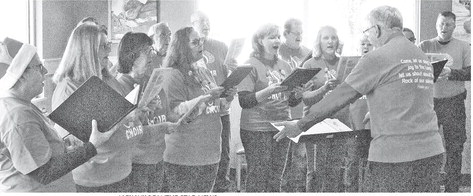briefing with state media that ….
briefing with state media that eating venison from CWD-positive deer is not recommended.
“It is a recommendation even from the CDC and our state department of health as far as not consuming venison from a deer that tests positive. That is the same recommendation that we provide on our website as well.”
In the Taylor County case, the western part of the county has become a new CWD surveillance area, where testing efforts are more intensive this year to try to gauge if the disease was isolated on the deer farm or if it is also present in the wild herd. The goal at the start of the fall was to get 100-150 tested samples in the area. Self-service testing kiosks were established at the Gilman Corner Store, Fins and Tines Bait and Convenience in Perkinstown, the DNR’s Pershing Wildlife Area and the Northwoods Country Store in Sheldon.
“We’ve had 25 samples submitted so far,” said Emma Doden, the new DNR wildlife biologist for Rusk and Taylor counties, in an Oct. 28 interview. “That’s probably been a little slow just because the harvest has been a little slower with that warmer weather. We’re hoping to have over 100 samples by the end of the season, so I really encourage folks to submit those samples if at all possible.
“When we take the CWD samples we also age the deer,” Doden added. “So that also really helps in our population trending analysis. Not only are we sampling for CWD but that’s really a good way to get the age of some of these deer that are harvested.”
Clark, Chippewa and Marathon counties also have multiple self-service testing kiosk options and there are establishments offering on-site assistance, whether it’s during business hours or by appointment.
If hunters do decide to get your deer tested, prior to submitting the sample, they are asked to fill out an electronic form as they register their deer on the DNR’s GameReg system (gowild.wi.gov/ wildlife/harvest). It’s also possible to schedule an appointment with your local DNR wildlife biologist or to obtain at-home lymph node extraction kits from your local biologist. See https://dnr.wisconsin. gov/topic/WildlifeHabitat/registersample. html for more details.
When dropping the sample off at a selfservice kiosk, you are urged to bring in the deer as soon as possible after harvest. If you choose not to bring the full carcass, remove the deer’s head with 5 inches of neck attached. Heads can be brought to a sampling location up to five days after harvest if kept refrigerated (35°F to 45°F) or longer if frozen.
If you harvested a buck and would like to keep only the antlers, you may skull cap the deer after registration and prior to bringing it to a sampling station. Remove the antlers before placing the head in the dropbox.
Hunters are also urged to take advantage of carcass disposal dumpsters that often become available during the nineday gun deer season. Dumpsters were set up in early November at the DNR Ranger Station in Medford and the Cenex CStore in Rib Lake in Taylor County. Marathon County Solid Waste in Ringle has a dumpster along with the Town of Johnson and Town of Knowlton. DNR Ranger Stations in Neillsville and Cornell have one as well.
An up-to-date list of sampling sites and disposal sites also can be found throughout the fall at the same web page, https://dnr.wisconsin.gov/topic/WildlifeHabitat/ registersample.html. “We’re not only managing for the short-term, what is the deer hunting experience going to be in 2021, but we need to be thinking about what is the deer hunting experience going to be for the next generation and what that means as far as knowing what to do now and being willing to take the steps to give the next generation of deer hunters the best chance to have the quality experience that we’ve all had for decades,” Pritzl said. “One of the things we really need to do to keep deer and deer hunters in their best position for the long-term future is to continue deer hunting and using that as part of the answer for managing deer populations. The degree that CWD presence would erode deer hunting activity, that in and of itself is a downward trajectory that we just can’t see develop in the future.”



